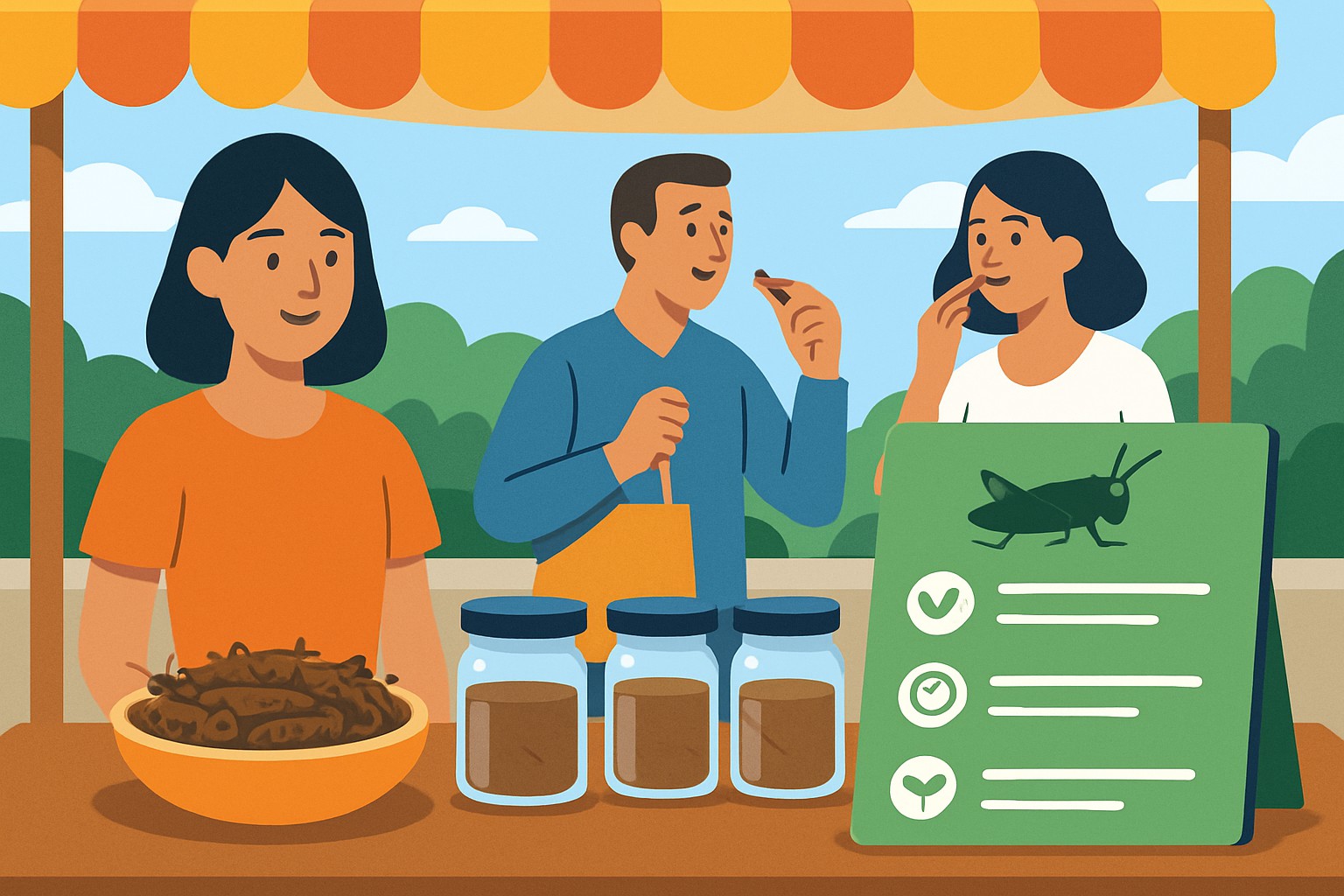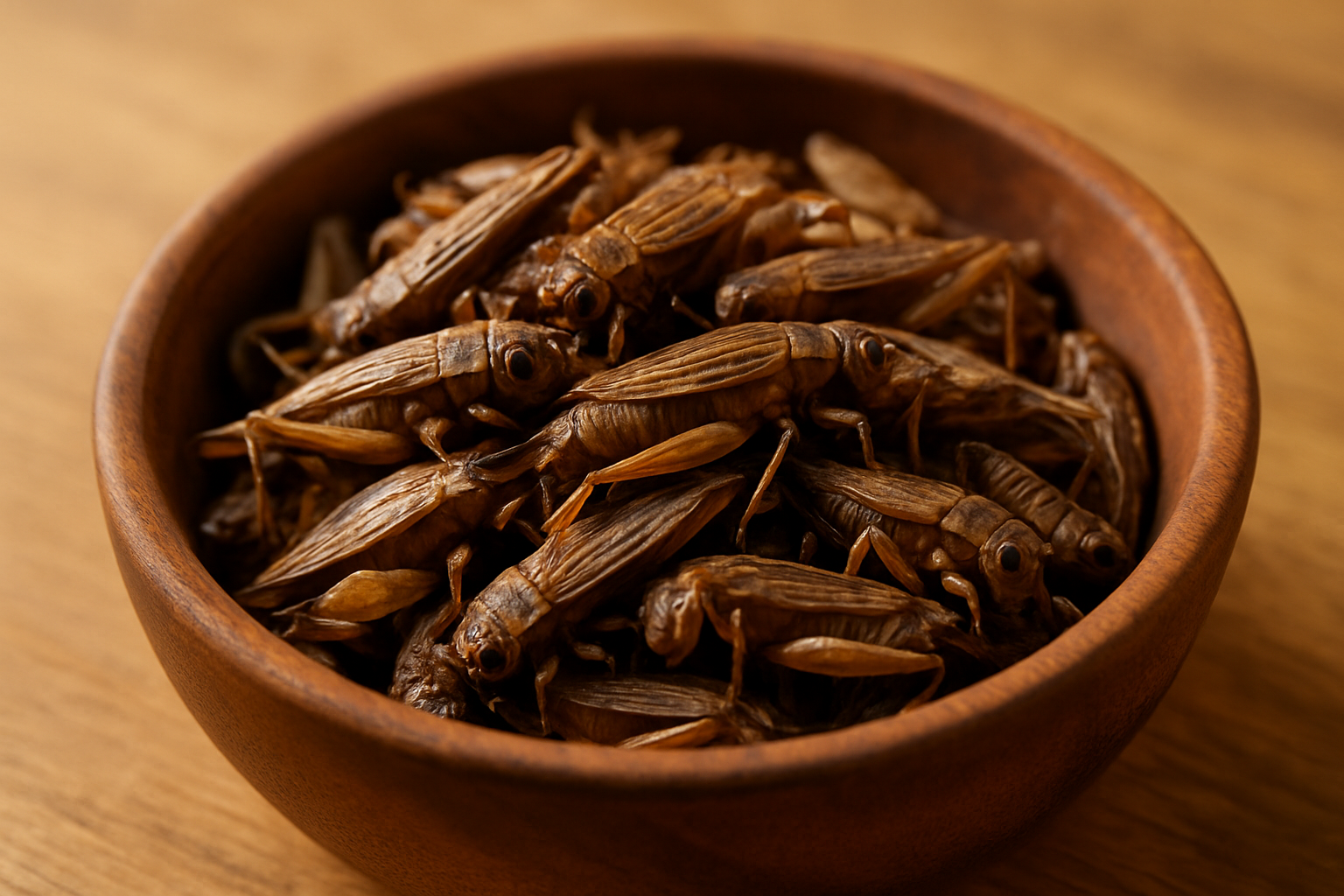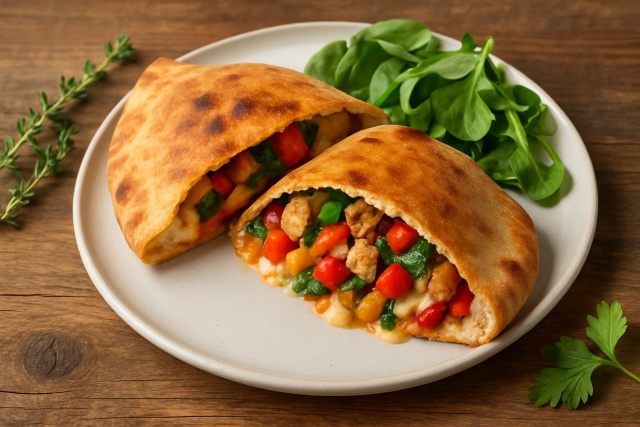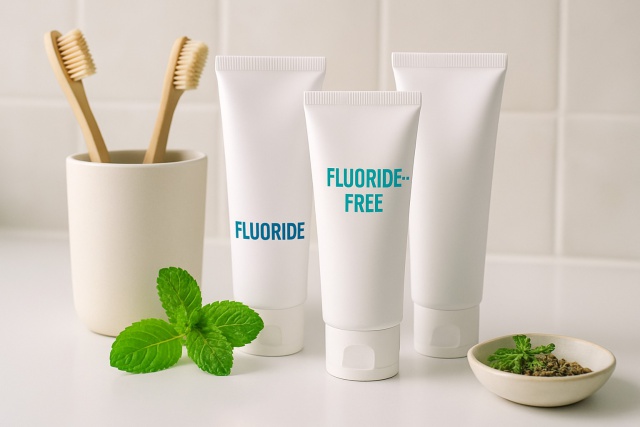Dried Crickets for Humans - Safety and Nutrition Facts

Dried crickets for humans are quietly making their way into pantries around the globe and gaining popularity as a sustainable and surprisingly nutritious food option. With the world’s population increasing and environmental pressures mounting, edible insects like crickets offer a truly eco-friendly alternative to traditional animal proteins. They are not only kind to the planet but also pack a strong nutritional punch, providing high protein levels along with essential micronutrients. This article aims to clear the fog surrounding the safety and benefits of dried crickets for human consumption.
What Exactly Are Dried Crickets for Humans Anyway
Dried crickets are crickets that have been carefully harvested, cleaned and dried to create a shelf-stable food product that’s safe for us humans to munch on. These little critters are raised in controlled hygienic conditions where safety is top of mind. After harvesting, the crickets are usually roasted or freeze-dried to remove moisture. This helps them keep longer without turning into science experiments in your pantry. You’ll come across dried crickets in various shapes and forms: whole roasted ones ready for snacking, finely ground into cricket powder or sneaking their way into protein bars and baked treats.
Getting to Know the Nutritional Value of Dried Crickets (Yes, Really!)
Dried crickets offer a surprisingly rich source of protein and healthy fats, vitamins and minerals that stack up nicely against many traditional protein choices.
| Nutrient | Dried Crickets (per 100g) | Beef (per 100g) | Chicken (per 100g) | Soy Protein (per 100g) |
|---|---|---|---|---|
| Protein | 65 g | 26 g | 31 g | 36 g |
| Total Fat | 14 g | 15 g | 3.6 g | 20 g |
| Vitamin B12 | 4.0 µg (166% DV) | 2.0 µg | 0.3 µg | 0 µg |
| Iron | 8 mg (44% DV) | 2.6 mg | 1.3 mg | 5.7 mg |
| Calcium | 70 mg | 18 mg | 15 mg | 277 mg |
Just a heads-up: DV means Daily Value, in case you were wondering.
Dried crickets often get a well-deserved nod because they pack all nine essential amino acids, making them a rare complete protein. They deliver the vital building blocks your body needs to bounce back whether it’s muscle repair, keeping your immune system in tip-top shape or overall wellness. Many plant proteins tend to be shy on one or more essential amino acids so crickets step in as a nutrient-rich option that can help keep your diet well-rounded.
Important Safety Tips for Eating Dried Crickets (Yes, Really!)
When the idea of munching on dried crickets crosses people’s minds, a few concerns tend to pop up—things like allergies and contamination or the all-important question of origin. Much like shellfish, some individuals might break out in an allergic reaction due to shared proteins beneath the surface. A tip I’ve learned the hard way: it’s key to source crickets from well-regulated farms to avoid nasties like pesticides or pathogens and environmental toxins.
- Always choose crickets from trusted food-grade farms that have clear and transparent production standards because you want to know exactly what goes into your snacks.
- Keep possible allergen cross-reactivity in mind, especially if you are allergic to shellfish or dust mites since those reactions can appear unexpectedly.
- Ensure the product has been properly roasted or freeze-dried to remove moisture and any pathogens. Think of it as giving your crickets a safe spa treatment.
- Avoid wild-harvested crickets because they might carry unwanted contaminants or pesticides that you don’t want.
- Look for third-party testing or certifications that support the product’s safety claims so you can enjoy your snack with peace of mind knowing it is free from harmful chemicals or microbes.
Food safety agencies in places like the US, EU and Canada have started rolling out rules for edible insects including crickets. These standards mainly focus on hygiene and set limits for contaminants while ensuring labeling is accurate. This oversight helps put consumers at ease knowing that dried crickets sold meet the food safety standards expected from other animal products.
How to Safely Add Dried Crickets to Your Diet Without Missing a Beat
Starting with dried crickets is usually straightforward and can even be surprisingly enjoyable if you take it slow and steady. I’ve found that beginning with small portions is the way to go because it keeps you on the safe side and helps watch out for sneaky allergic reactions. And of course don’t forget to check product labels for ingredients and allergen info—it’s easy to overlook but worth the extra minute. Tossing dried crickets into recipes you’re comfortable with is a neat trick to ease into their flavor without it feeling too weird.
Start off by trying a small handful of dried crickets to make sure your body isn’t having allergic reactions or digestive issues.
Choose products from trustworthy brands that clearly share where their crickets come from and how they’re processed without shady practices.
Pay attention to how you feel within the first 24 hours after eating them because your body usually gives clear signals.
Add dried cricket powder into your smoothies, baked treats or protein shakes so the flavors blend well without taking over.
Store your dried crickets in airtight containers in a cool dry spot to keep them crunchy and fresh while preventing mold.
Environmental and Economic Advantages of Eating Dried Crickets They’re a Surprisingly Smart Choice
Cricket farming usually leaves a much smaller environmental footprint compared to raising beef, pork or chicken. These little critters need far less water and land and emit far fewer greenhouse gases which is always a win for the planet. Since they convert feed into protein efficiently, it takes much less feed to produce the same amount of protein.
- Crickets generate roughly 80 percent less greenhouse gases than your typical cattle farming operation, which is quite the environmental win.
- They need about 1.7 calories of feed to churn out just 1 calorie of cricket protein, while beef demands a hefty 10 calories—talk about efficiency.
- Raising crickets sips far less water compared to traditional livestock, making them surprisingly thirsty-friendly.
- Cricket farms take up a fraction of the land, which is great news for preserving our natural habitats.
- Tossing cricket protein into diets not only spices up food choices but also gives a solid boost to global food security—something we could all appreciate these days.
Common Misunderstandings About Eating Dried Crickets (Yes, They’re a Thing!)
Many individuals hesitate to give dried crickets a shot because of common misconceptions about how they taste, whether they are safe and cultural vibes around eating insects. When cooked right, crickets don’t have the off-putting bug flavor people imagine. They taste surprisingly mild. Raised in spotless controlled environments, they’re just as safe to chow down on as any other meat. Plus, dried crickets pack a decent nutritional punch and aren’t just something you munch on if you’re stranded on a desert island.
- When roasted or dried, crickets have a subtle nutty flavor that pairs well with many spices and seasonings. It’s like an unexpected kitchen secret you didn’t know you needed.
- The farming and processing of crickets follow hygiene standards similar to those in other food industries so you can be confident it’s all done properly.
- Dried crickets have been safely enjoyed for centuries in many cultures around the world. This shows they are not just a passing trend.
- They provide a concentrated source of essential nutrients, disproving the old myth that they lack nutritional value.
- Eating crickets isn’t just a last-ditch survival tactic. It’s becoming a thoughtful choice that combines health benefits with support for sustainability.

Finding Dried Crickets and What You Should Know (Because Yes, They’re a Thing)
Dried crickets are popping up more frequently in online shops and health stores these days. When you are buying, it is a good idea to look for clear info about the cricket species and how they were raised and processed—details that can really make a difference. Certifications like organic, non-GMO or third-party testing usually offer some peace of mind about quality.
Conclusion Are Dried Crickets Really a Safe and Nutritious Choice?
Dried crickets for humans offer a surprisingly nutritious and eco-friendly protein punch that fits right in with today’s health-conscious diets. They pack a full range of amino acids and plenty of key nutrients. Their sustainability profile is hard to beat and definitely worth keeping on your radar. When picked and prepared with care, they’re perfectly safe and can slide into a balanced diet without much hassle.





